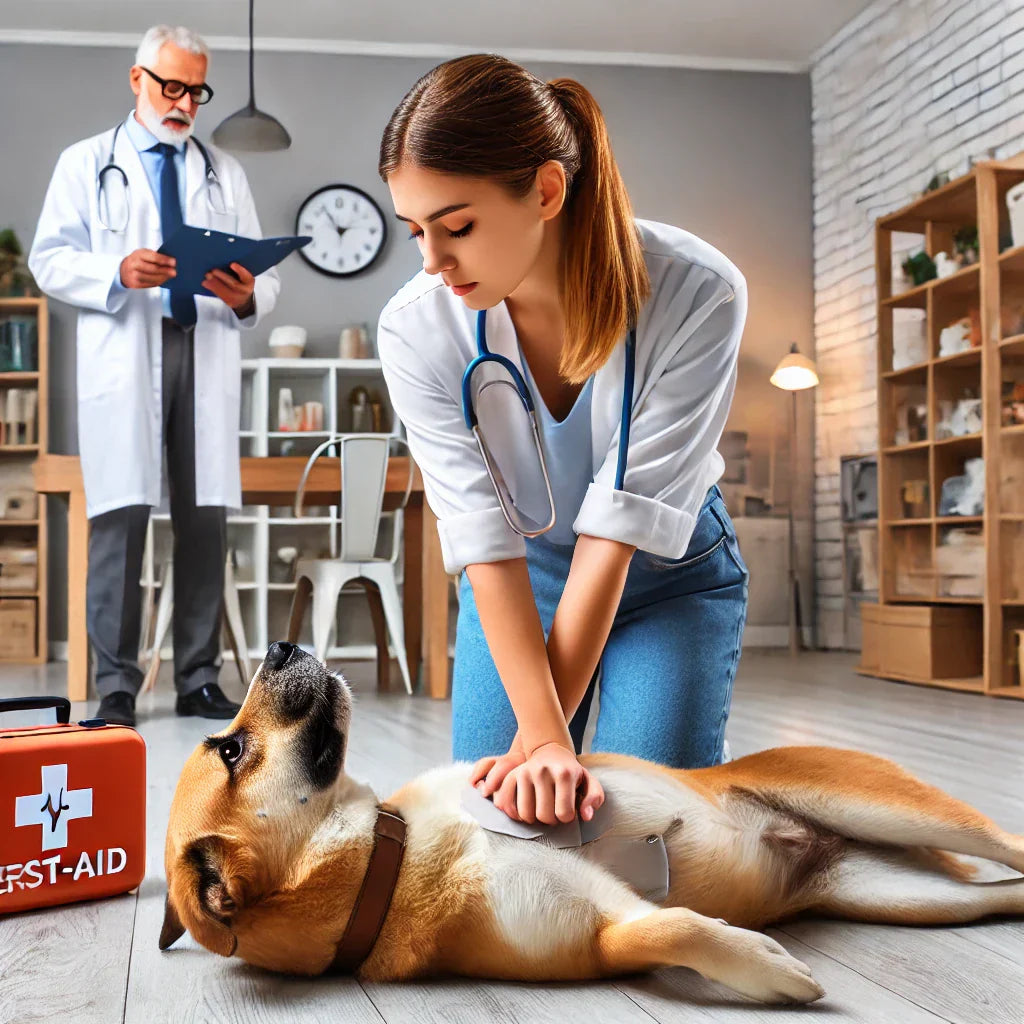
Pet CPR: Learn How to Save Your Beloved Companion
Share

Introduction: Could You Save Your Pet in a Life-Threatening Emergency?
When a pet experiences cardiac arrest, choking, or respiratory failure, knowing how to perform CPR could be the difference between life and death. Every second counts in an emergency, and understanding pet CPR techniques can help you react quickly and effectively.
In this guide, you'll learn:
✅ How to perform CPR on a dog or cat in distress
✅ Proper pet chest compression depth & breathing techniques
✅ When and how to use a pet CPR mask
✅ Common mistakes in pet CPR and how to avoid them
🐾 Follow these life-saving tips to keep your pet out of harm's way and be prepared for any crisis.
1. Recognizing When Your Pet Needs CPR
📌 How Do I Know If My Pet Needs CPR?
🚨 If your pet is experiencing any of the following, immediate action is required:
✔ Unconsciousness – Your pet does not respond to touch or sound.
✔ No breathing – No movement of the chest or airflow from the nose.
✔ No pulse – No heartbeat detected on the inside of the thigh (femoral artery).
⚠ Can I Perform CPR on My Pet if They Are Unconscious but Still Breathing?
No—CPR is only for pets who have completely stopped breathing and have no pulse. If your pet is breathing but unconscious, transport them to a vet immediately.
🐾 Identify health issues early to prevent emergencies—knowing these signs can help prevent critical situations.
2. Step-by-Step Guide to Performing CPR on a Pet
A. Assess Your Pet’s Condition Before Starting CPR
✔ Check breathing & pulse – If absent, CPR is required.
✔ Lay your pet on a flat surface on their right side.
✔ Extend their neck & clear the airway of any obstructions.
B. Pet Chest Compressions: Proper Technique for Different-Sized Pets
📌 Proper Chest Compression Depth for Pet CPR:
|
Pet Size |
Compression Technique |
Compression Depth |
Compression Rate |
|
Small pets (under 30 lbs.) |
Use fingers/thumb or one hand |
1/3 to ½ of chest width |
100–120 compressions per min |
|
Medium to large dogs |
Use both hands, one over the other |
1/3 of chest width |
80–100 compressions per min |
|
Flat-faced (brachycephalic) breeds |
Compress directly over the heart |
1/3 of chest width |
100–120 compressions per min |
✔ Maintain a steady rhythm—stop only for rescue breaths or if your pet shows signs of recovery.
C. Pet Rescue Breathing Methods: How to Provide Artificial Respiration
📌 Steps for Performing Rescue Breaths:
1️⃣ Close your pet’s mouth and gently extend their head.
2️⃣ Cover their nose with your mouth and blow until you see their chest rise.
3️⃣ Give one breath every 2–3 seconds (10–12 breaths per minute).
✔ Continue until breathing returns or professional help arrives.
⚠ Can I Use a Human CPR Mask on My Pet?
No—human masks are not designed for pets. A pet-specific CPR mask provides a proper seal and helps deliver oxygen effectively.
🐾 Learn how to handle choking incidents alongside CPR—knowing both techniques can save your pet in different emergencies.
3. CPR for Different Pets: Dogs, Cats & Small Animals
A. CPR for Dogs
✔ Lay them on their right side.
✔ Perform compressions at the widest part of the chest.
✔ For barrel-chested breeds (like bulldogs), place hands directly over the heart.
B. CPR for Cats & Small Pets
✔ Use fingers instead of full hand for compressions.
✔ Be extra gentle—only compress ⅓ of their chest width.
✔ Provide quicker, shallower breaths to avoid lung damage.
🐾 Make your home safer to avoid situations requiring CPR—prevention is always the best strategy.
4. Preventing Common Mistakes in Pet CPR
🚨 Avoid These Life-Threatening CPR Mistakes:
✔ Using excessive force – Can break ribs in small pets.
✔ Not sealing the mouth during rescue breaths – Air leaks reduce effectiveness.
✔ Stopping CPR too soon – Continue until a vet takes over.
✔ Delaying professional medical care – Even if revived, your pet still needs a vet assessment.
🐾 Ensure your home is a safe space for your pet—reduce the risk of accidents before they happen.
5. Getting Certified in Pet CPR: Training & Resources
📌 Why Get Certified in Pet CPR?
✔ Gain hands-on experience with CPR techniques for cats and small animals.
✔ Learn to use a pet CPR mask and oxygen delivery devices.
✔ Increase confidence in handling real emergencies.
📌 Where to Learn Pet CPR?
✔ Local veterinary clinics & animal welfare organizations
✔ Online pet CPR training courses (Red Cross, PetTech, etc.)
🐾 Follow these life-saving tips to keep your pet out of harm's way—education is key to saving lives.
